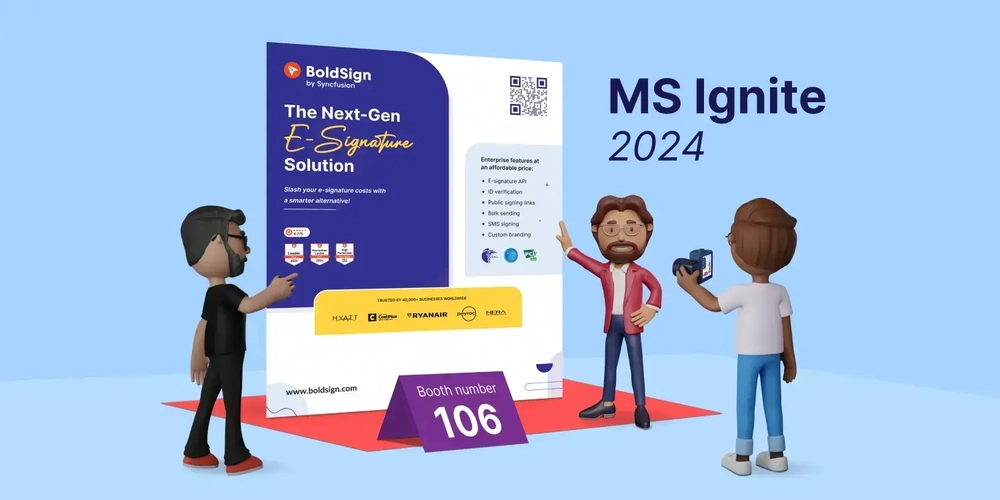Agentic AI Defined: Use Cases & Cogito Tech’s Data Solutions
The increasing role of foundational models in boosting AI agents has fueled the growth by simplifying multi-step tasks beyond traditional AI’s capabilities. Foundational models, such as large language models (LLMs), provide AI agents with advanced reasoning, planning, and language understanding capabilities. This enables agents to autonomously break down, interpret, and execute complex tasks that previously… Continue reading Agentic AI Defined: Use Cases & Cogito Tech’s Data Solutions The post Agentic AI Defined: Use Cases & Cogito Tech’s Data Solutions appeared first on Cogitotech.

The increasing role of foundational models in boosting AI agents has fueled the growth by simplifying multi-step tasks beyond traditional AI’s capabilities. Foundational models, such as large language models (LLMs), provide AI agents with advanced reasoning, planning, and language understanding capabilities. This enables agents to autonomously break down, interpret, and execute complex tasks that previously required manual intervention or rigid programming.
What is Agentic AI?
Agentic AI are intelligent machines that can make choices and act independently. With the help of precise Agentic AI data solutions, such machines can reason, plan, and react dynamically to achieve established goals. Unlike traditional AI models that operate with predefined rules and execute specific prompts, Agentic AI unites different AI methodologies such as machine learning algorithms, reinforcement learning, and large language models (LLMs) to power autonomous agents, which can independently assess objectives and build action plans to attain goals.
Difference Between Agentic AI and Generative AI
The rise of generative AI, driven by large language models and advancements in natural language processing, has been a significant milestone. It allows machines to generate content such as text, code, and more. However, these systems operate reactively, generating outputs based on user prompts rather than taking initiative or acting autonomously.
Agentic AI represents the next evolution in artificial intelligence. They operate with a sense of purpose, planning, executing, and refining actions across complex tasks without requiring constant human supervision. While generative AI is about on-demand creation, Agentic AI is about autonomous action and problem-solving on the go.
| Aspect | Generative AI | Agentic AI |
| Core Function | Produces content based on prompts | Takes autonomous actions to achieve goals |
| Primary Capability | Text, image, video, and code generation | Goal-setting, decision-making, and multi-step planning |
| User Interaction | Reacts to user input (prompt-response) | Can act independently with minimal or no human prompting |
| Autonomy | Low – requires user input for each task | High – operates proactively and iteratively over time |
| Memory & Context | Limited to the current prompt or short-term context | Maintains memory, tracks progress, and adapts strategies dynamically |
| Example Use Case | Writing an article, generating an image | Managing a project, optimizing a supply chain, tutoring a student |
| Nature of Output | Static – delivers results at a point in time | Dynamic – evolves and adapts actions over time |
| Coordination | Works alone, typically not built to collaborate with systems | Collaborates with other agents or systems |
| Learning Loop | Often requires retraining or fine-tuning externally | Learns from the environment and feedback in real time |
The term AI Agents persistently comes up in conversations about Agentic AI, but knowing the difference between them is crucial. Agentic AI means the broader concept of AI systems designed to work autonomously and pursue goals, while AI-driven agents are the individual units within these systems that carry out specific tasks or functions to accomplish those goals.
How Do AI Agents Work?
AI Agents can learn from every interaction, adjust their behavior, and improve their decision-making processes. LLM applications like Meta’s Llama, OpenAI’s ChatGPT, and Google Gemini highlight how such systems understand natural language commands, evaluate complex data set patterns, and enhance problem-solving abilities. The shift from rule-based systems to intelligent agents is not confined to reducing manual input but is about strengthening machines to collaborate with humans.
Types of AI Agents within an Agentic Architecture
AI Agents are the foundation of Agentic AI architecture, driving next-generation intelligent automation. Fundamentally, agentic AI brings a network of bespoke agents designed to perform particular functions collaboratively to pursue greater organizational objectives.
User Assistant Agents are significant in facilitating human-AI collaboration by assisting users in automating routine work more effectively. They are trained on experience, like prior support tickets and customer service contacts, and are usually employed by help desk teams to diagnose and fix problems rapidly. Automating repetitive work and offering appropriate context improves productivity and lowers manual effort.
Generative Information Retrieval Agents efficiently retrieve and combine information from multiple internal and external systems. They are best suited for quickly changing or unregulated environments, in which timely, context-sensitive information is critical. These agents assist users by providing accurate, up-to-the-minute insights to aid in decision-making and problem-solving.
Prescriptive Knowledge Agents are designed to operate in strictly regulated industries like healthcare, finance, and legal services. They guarantee that every recommendation and action strictly complies with industry guidelines, legal regimes, and business policies. These agents’ outputs are highly reliable, audit-proof, and engineered to contain risk by following a compliance-and-governance-first approach.
Dynamic Workflow Agents power automation in the agentic environment. They self-create and run intricate workflows across systems, detecting the correct APIs, determining the sequence of tasks, and filling out advanced user requests with minimal or no human intervention. It plays a crucial role in automating operations and deploying intelligent automation on a large scale throughout the enterprise.
Key Components of an AI Agent
Each AI agent in an agentic system is built on three key components:
- Prompt: The directive that defines the agent’s objectives, operational guidelines, and constraints, and essentially the agent’s blueprint.
- Memory: The agent’s contextual awareness is built from past interactions and data. It enables learning, decision-making, and continuity.
- Tools: The agent uses APIs, functions, or services to execute tasks and fulfill objectives.
The Process Agentic AI Follows
Agentic AI systems are built on advanced decision-making capabilities, allowing them to evaluate options, anticipate outcomes, and adapt to unexpected challenges. These systems often consult different large language models (LLMs) to cross-reference insights and strengthen their reasoning.
Agentic AI is designed to thrive in dynamic environments. Through reinforcement learning, agents learn from real-time feedback and adjust their actions accordingly, ensuring continuous improvement and optimal performance. In addition, machine learning algorithms help agents identify patterns, make predictions, and boost decision-making by learning from large datasets.
At a high level, an agentic system operates through the following stages:-
- User Provides Instruction: The user gives a prompt, which the system interprets. If the instruction is ambiguous, it may ask for clarification.
- System Plans and Executes: The system converts the prompt into a workflow, breaking it into tasks. A central agent delegates tasks to subagents with the right tools and domain expertise.
- Iterative Refinement: The system may engage the user for feedback and refine the output in multiple iterations until the result meets expectations.
- Final Execution: Once validated, the agent performs any necessary actions to complete the task.
Applications of Agentic AI Across Industries
- Healthcare
Agentic AI can transform the healthcare industry by introducing intelligent agents with the potential to operate across diagnostics, personalized treatment planning, and clinical trial management. These agents work ahead with simple data evaluation with their ability to interpret patient histories, identify patterns across multimodal data (e.g., lab results, imaging, genomics), and adjust care plans dynamically as new data becomes available.
Example: An AI health assistant that persistently monitors a diabetic patient’s glucose levels, adjusts insulin dosage in response, and alerts caregivers in case anomalies occur. - Finance
Agentic AI facilitates the creation of sophisticated financial agents who can act autonomously on a spectrum of high-level tasks. The agents can observe real-time market trends without stopping, study large datasets, and detect anomalies or patterns signaling investment opportunities or risk. Another essential use is fraud detection: such agents can actively monitor transactions, identify suspicious activity, and react in real-time to potential fraud, significantly improving financial security and compliance.
Example: AI agents in high-frequency trading can independently react to market volatility while coordinating with risk management systems. - Manufacturing and Supply Chain
In intelligent factories, Agentic AI systems automatically fine-tune production schedules, track machine condition, and predict supply chain breakdowns before they happen. Autonomous agents are synchronized smoothly across inventory, logistics, and quality control departments to maintain perpetual, effective, responsive manufacturing operations.
Example: An AI-powered logistics agent can reroute deliveries based on real-time traffic, weather, or inventory levels to minimize delays and costs. - Retail and E-commerce
Retailers intend to boost AI spending, fueled by necessities like store analytics, personalization recommendations, adaptive ads, and demand planning. Agentic AI makes e-commerce operations smarter and helps supermarkets maximize product positioning. Fashion retailers can automate seasonal displays, and electronics stores can optimize shelf layouts for improved visual appeal and sales.
Example: A fashion store may use an AI agent to automatically generate and rotate in-store merchandising displays, aligned with seasonal style directions, product availability, and client choices, while effortlessly boosting interaction and sales. - Agritech
AI strengthens farming by addressing challenges such as crop monitoring, soil analysis, disease detection, and optimizing yield. Agentic AI allows autonomous agents to evaluate crops’ health, adjust irrigation, and identify pests in real-time, eliminating human effort and maximizing efficiency.
Example: An agri-biotech company may employ AI agents to examine images of plants and soil information for the earliest indication of stress. Like Cogito Tech’s example of DILI, where model accuracy was amplified by annotated medical images, annotated agronomic data increases AI’s performance in precision agriculture.
Cogito Tech’s Major Contributions to Agentic AI Data Solutions
Cogito Tech supports Agentic AI by delivering high-quality, human-annotated data for text, image, video, and sensor inputs with the following contributions:-
High-Quality Human-in-the-Loop Annotation
Cogito Tech facilitates AI agents to learn and act accurately through carefully labeled data in text, image, video, and sensor modalities.
Domain-Specific Expertise
We provide industry-specialized Agentic AI data annotation services for healthcare, agritech, finance, and manufacturing sectors. These services are necessary for training agents working in regulated or high-complexity settings.
Multimodal Data Processing
Our annotators contribute to creating agents that scan and correlate different data types (e.g., medical images + patient history) for informed decision-making.
Ground Truth for Reinforcement Learning
We provide the accurate feedback loops essential for training agentic systems via reinforcement learning, allowing for adaptation and ongoing improvement.
Scalable Workflow Integration
Our experts incorporate flexible annotation pipelines aligned with agile AI development cycles, supporting rapid iteration and deployment of intelligent agents.
Bias Mitigation and Quality Control
Cogito Tech enforces multi-layered QA protocols to reduce error and bias, which is necessary for AI agents making high-impact decisions in sensitive areas.
Conclusion
Agentic AI will redefine how businesses function by providing autonomous, smart systems that can work alongside people, learn in real time, and fuel continuous improvement. Such systems can solve intricate issues, make informed decisions based on context, and improve industry efficiency. The key to this observation lies in the foundation upon which they are developed, i.e., high-quality, well-annotated data.
Cogito Tech independently contributes to agentic AI transformation with industry-standard data annotation, providing scalability, accuracy, and domain relevance services. Our solutions enable AI agents to get the trusted ground truth required to learn, reason, and act independently in ever-changing worlds. From agritech to healthcare and beyond, our annotators train AI systems with structured, bias-free, and context-rich data. To get high-quality data solutions, contact us today!
The post Agentic AI Defined: Use Cases & Cogito Tech’s Data Solutions appeared first on Cogitotech.










































































![Apple Foldable iPhone to Feature New Display Tech, 19% Thinner Panel [Rumor]](https://www.iclarified.com/images/news/97271/97271/97271-640.jpg)
![Apple Shares New Mother's Day Ad: 'A Gift for Mom' [Video]](https://www.iclarified.com/images/news/97267/97267/97267-640.jpg)
![Apple Developing New Chips for Smart Glasses, Macs, AI Servers [Report]](https://www.iclarified.com/images/news/97269/97269/97269-640.jpg)
![Apple Shares Official Trailer for 'Stick' Starring Owen Wilson [Video]](https://www.iclarified.com/images/news/97264/97264/97264-640.jpg)













































































































 Evolved as a Predominant Framework for Ransomware Attacks.webp?#)



_Aleksey_Funtap_Alamy.jpg?width=1280&auto=webp&quality=80&disable=upscale#)
_Sergey_Tarasov_Alamy.jpg?width=1280&auto=webp&quality=80&disable=upscale#)

























































































































![[The AI Show Episode 146]: Rise of “AI-First” Companies, AI Job Disruption, GPT-4o Update Gets Rolled Back, How Big Consulting Firms Use AI, and Meta AI App](https://www.marketingaiinstitute.com/hubfs/ep%20146%20cover.png)































































































































































































































































